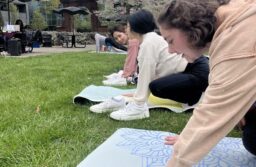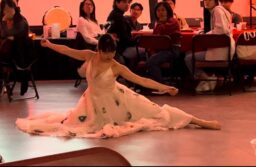“Blue Is the Warmest Color,” directed by Abdellatif Kechiche, is a story of finding love, curiosity and the stumbles along the way.
The main character, Adele Exachopolos, finds heartbreak after she parts with her boyfriend Thomas at the onset of the film. After the breakup, Adele is left questioning and searching for something still unknown.
The film takes you on a walk through the life of this “average” middle class teenager. Adele finds herself lost amidst her curiosity. The audience discovers the difficulties Adele faces as she deals with the conflicts of growing up throughout the movie. The audience, because of Kechiche’s good direction, understands Adele and roots for her.
After Adele’s encounter with Beatrice she becomes curious about the possibility of a romantic relationship with a woman. Having a woman show her that she can be loved sparks her curiosity about women.
As Adele struggles with her feelings, the audience is left to wonder how she will reconcile her newly awoken emotions. When Adele first meets Emma, they hold their breath in anticipation. The audience questions: will they fall in love and what will happen next?
As the movie progresses, Adele becomes frustrated and feels alienated from her peers as she begins to explore her sexuality. Adele worries about what people will think about her relationship with Emma and is unsure about what to think herself.
The movie does a great job of relating to every audience member, regardless of sexuality. As Adele faces pain, the audience wants to cry with her. As she is confused, the viewer understands her confusion. The audience is able to relate, because we have all been 15 at one point, and we have all been betrayed in some way.
This film is certain to stir controversy among American viewers because of its content. The fact that it’s limited to theaters in the area may be an indication of this. However, this film is relatable to all audiences and should not be subject to a small viewing audience. It is a story that explores many themes, such as socioeconomic class, love, coming of age and finding yourself.
—
ljohn1@ramapo.edu




